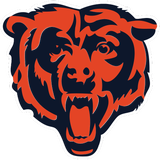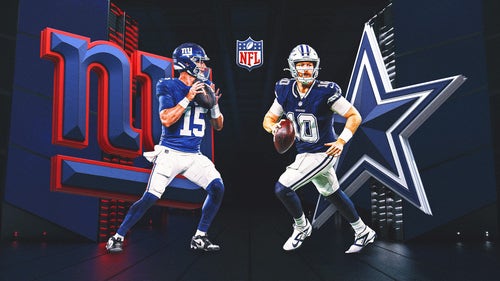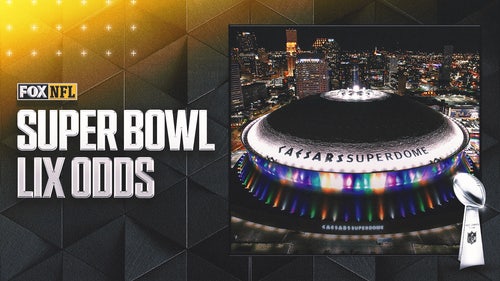
The race for the 2017 NFL draft's No. 1 pick: Who might get it, who they might take
As the NFL regular season enters its ninth week, an overwhelming majority of teams—25, to be exact—are within two games of playoff position. (That’s one of the reasons the trade deadline was quiet yet again this year.) Even a couple teams outside that cutoff, like the Chargers and Panthers, still have the talent to make noise in the second half.
For the lonely few that are all but buried, the 2017 NFL draft is starting to come into clearer focus on the horizon.
Which franchises could wind up with the No. 1 pick next April? What would they do with it if they land there? The season’s midway point is a natural time to take stock.

The Teams
Cleveland Browns: The 2017 draft’s No. 1 pick is theirs for the taking. The Browns probably would be happy to oblige at this point, but they’d prefer to go on the clock with at least one or two wins under their belt. And that is where things get a little tricky. The 49ers are sitting at 1–6, and should they and the Browns both wrap the season 1–15, the strength-of-schedule tiebreaker would come into play, since those teams do not meet this year. In playoff seeding, strength of schedule favors a team that has faced tougher opponents; in draft seeding, the team with the weaker schedule gets the nod. So, the prospect of a 1–15 Cleveland team winding up at No. 2 instead of No. 1 is very feasible.
Would the Browns hold on to the top pick if that’s where they land? Last year, they dealt away the No. 2, 8, 77, 100, 141, 176 and 223 picks in various trades, and they could be sending a compensatory 2017 third-rounder to New England to complete their Jamie Collins deal. The revamped front office, led by Sashi Brown, has shown no hesitation to pull the trigger on a trade.
If they were to stay put at No. 1, the debate would be between a quarterback and defense. Does Cody Kessler’s development buy Cleveland time to wait on a QB? If so, Myles Garrett leads the options up top.

San Francisco 49ers: Unlike the Browns, who at least have internal QB options in Kessler and veteran Josh McCown, the 49ers will have no choice this off-season but to venture outside the organization. Retaining Colin Kaepernick at nearly $20 million for 2017 is an unfathomable outcome. And even if Chip Kelly does something nuts, like hand the reins over to Christian Ponder, San Francisco will be in the market for a young quarterback at or near the top of the draft.
One would assume Kelly would have the ear of GM Trent Baalke (assuming Baalke retains his position) in choosing which prospect best fits his system. Between Nick Foles, Mark Sanchez, Sam Bradford and even Michael Vick, Kelly never quite had an ideal hand-picked signal-caller during his Philadelphia days; there was some hope that Kaepernick could fit the bill in San Francisco, but that has yet to materialize.
Would Deshone Kizer be the choice? Deshaun Watson? Mitch Trubisky or Brad Kaaya could emerge in the mix, too, but neither are the athletic matches of the Kizer-Watson combo. Kelly showed with Foles and Bradford that he can massage results out of less explosive quarterbacks, but he’d be better off heading the other direction.
Chicago Bears: The Bears’ chances at the No. 1 pick may have flown out the window with their Monday night win over Minnesota. Chicago already sits on two wins and looks like a team capable of securing a couple more, including against the 49ers in Week 13.
Like San Francisco, the Bears have almost no choice but to add a quarterback somewhere in this draft. They have selected three quarterbacks since 2010 (Dan LeFevour, Nathan Enderle and David Fales), but none went higher than the fifth round and all are gone from the roster. As a result, there’s no youngster waiting in the wings to take over Jay Cutler’s job.
But what of Cutler? The general consensus has been that this season marks the end of the line for his Chicago days, but ... does it? His contract points that way—for a mere $2 million cap hit after this season, the Bears could clear the remaining $70 million-plus left on Cutler’s contract from their books. His 2017 hit, though, is a reasonable $16 million ($2 million less than Brock Osweiler’s per-year average), and there’s not any QB currently waiting in the wings.

Jacksonville Jaguars: Which teams might consider a trade up to No. 1? Based on what we saw last season (and what draft history tells us), the most likely candidates are the franchises desperate for a quarterback. Does that include the Jaguars?
Publicly, not yet. Blake Bortles, as with his team, is enduring a disappointing season, but he’s still just 24 and under contract through at least 2017. However, once the off-season rolls around, the Jaguars will have to decide if they want to pick up Bortles’s fifth-year contract option—for 2016, the price on that for a top-10 QB like Bortles was upwards of $17 million.
If they decline to utilize that option on Bortles, or fail to lock him into a longer-term contract, keep an eye on the Jaguars as a trade-up contender.
New York Jets: The Jets spent a 2015 fourth-rounder on Bryce Petty and a 2016 second-rounder (for whatever reason) on Christian Hackenberg. Would they feel O.K. heading into next season with either of those players at the helm? Based on what we know to this point, it’s doubtful—Petty was on the roster bubble as of the final week of the preseason; Hackenberg appears to be a multi-year, complete reconstruction project.
Outside of the draft, then, that would leave the Jets with free agency or the trade market. The former route may not offer much in the way of starting QBs, if Cutler or Kirk Cousins does not get to the open market. Re-signing Ryan Fitzpatrick again or holding on to Geno Smith doesn’t seem likely.
Washington Redskins: GM Scot McCloughan, to this point, has been more of a trade-down GM than an aggressive draft riser, but his team could wind up in a similar spot to the Jets. Cousins, who is playing out this season on the franchise tag, could become a free agent after this season if Washington cannot extend him. Would that tempt McCloughan to go all-in on the 2017 class?
Miami? Cincinnati? Tampa Bay?: Forget about the quarterbacks for a second. Let’s say that Myles Garrett really is viewed as a generational-type talent at defensive end. If the Browns or 49ers sit at No. 1 but don’t love the value of a quarterback there, could they slide back and allow an edge rush-needy team to nab Garrett up top? Perhaps.

The Prospects
Myles Garrett, DE, Texas A&M: He is the No. 1 prospect in this class, at the moment. Barring an injury, some sort of off-field incident or Garrett shocking the world by returning to A&M, odds are he’ll still be atop most boards when the draft rolls around next April. Garrett has 4.0 sacks and 9.5 tackles for loss so far this season, giving him career totals of 26.5 and 41.5, respectively.
He is a proven pass rusher with a variety of moves to get both inside and outside of tackles trying to slow him down. At 6' 5" and 262 pounds, he also has the size to set the edge and shut down run plays.
His positioning in this draft class is on track to be similar to that of Jadeveon Clowney back in 2014. Clowney heard his name called No. 1, then Bortles was the first QB taken that year at No. 3. (Derek Carr was pick No. 36.) Because of injuries, it took Clowney awhile to show a level of dominance appropriate to that draft position, but he’s getting there. Garrett’s breakthrough could arrive much sooner.
Deshone Kizer, QB, Notre Dame: The Irish’s 3–5 record aside, Kizer has established himself this season as a top 2017 QB prospect, provided he ultimately chooses to enter the draft early. Were it not for his play against Syracuse (471 yards passing, four total TDs) and Miami (263 yards passing, two TDs), the Irish might be even worse off than they are.
That said, he has not been as consistent as NFL evaluators might like, at least from a mechanics standpoint. When he sets his feet, Kizer throws as pretty and accurate a deep ball as you’ll see from this year’s class, showing the ability to drop the ball into a bucket along the sidelines. When he doesn’t, he will miss by opening up his body or falling onto his back foot. Correctable problems, yes, but might those concerns drop him from No. 1 pick consideration?
Kizer, at 6' 4", 230 pounds with a strong arm, does fit the prototypical NFL mold. He also brings a dual-threat skill set, as evidenced by his 836 yards and 17 touchdowns on the ground in his career. He has challengers for the honor of first QB drafted in 2017, but Kizer is an exciting prospect.
DeShaun Watson, QB, Clemson: Even casual college football fans should be familiar with Watson’s game by now, just due to the ever-increasing number of big games Clemson has played in the past two seasons. Last weekend, Watson threw for 376 yards and two touchdowns as the Tigers rallied past Florida State on the road. He is even more of a pure athlete than Kizer, which makes up for his smaller frame by comparison (listed at 6' 3", 215).
Watson did throw a pair of interceptions in Clemson’s recent win over Florida State, and that’s an area of his game that could give scouts pause. The Clemson star now has 10 INTs on the year and 25 over the past two seasons. That total falls under a slightly better light when one considers Watson has thrown nearly 800 passes during that time. Still, a 3.2% interception rate is high—just five NFL quarterbacks have a higher clip so far this season.
The thought of Watson playing in Kelly’s system is an entertaining one. How the rest of the league evaluates him will depend on where it sees his ceiling as a pocket passer. He has improved during his career in that regard, but he still does make a few too many mistakes out of a very QB-friendly system.
• THAMEL: Watson’s plan to graduate early ushering in a new trend in the race to the NFL
Mitch Trubisky, QB, North Carolina: Opinions on the junior QB are all over the map right now—ESPN’s Mel Kiper just ranked him as this class’s top QB; DraftWire’s Luke Easterling has him at No. 52 overall, behind five other quarterbacks; Bleacher Report draft expert Matt Miller recently told SI that he’d like Trubisky to stay at North Carolina for the 2017 season “because he has some first-round traits.”
The main reason for the fluctuation is that Trubisky just became the full-time starter this season, meaning he now has eight total starts to his credit. While he’s been brilliant in that time (71.2% completion rate, 18 touchdowns, two INTs), it’s a small sample size for a potential No. 1 pick.
Trubisky is generating so much buzz not just because of his impressive arm but because of the poise and moxie he shows both in the pocket and under pressure. He has the intangible qualities similar to what Carson Wentz showed at North Dakota State—the ability to stay within himself no matter the situation. For as good as Kizer and Watson have been, they have not separated themselves from the pack. Trubisky is closing.

Brad Kaaya, QB, Miami: Kaaya warrants at least a mention here before we move on. It’s still unclear whether or not he will enter the draft, but he could leap up higher than some expect if he does. A three-year starter from a more pro-style system than the likes of Watson or Trubisky, Kaaya could be the favored choice of a team wanting a true pocket passer.
That said, he does have his issues in the pocket: Pressure can unravel him, and he does not have the speed to really be a threat on the run.
Jonathan Allen, DL, Alabama: The main threat to Garrett’s standing as the top overall prospect is not any of the aforementioned quarterbacks. It’s Allen. He is a man among boys at the college level, showing up in dominant fashion on a weekly basis.
Allen (6' 3", 294 lbs.) also has shown the ability to line up anywhere, including on the outside as a massive defensive end. If he does not contend for Defensive Rookie of the Year honors next season, it will be a surprise. He deserves more love as the potential No. 1 pick than he has gotten to date.
Jabrill Peppers, S, Michigan: Along with his Heisman campaign, Peppers’s chances to be a top-five selection have increased over Michigan’s first eight games. He can do a little bit of everything, from playing as a linebacker to changing the kick with a return. It’s still hard to see him leapfrogging either Garrett or Allen if a team picking No. 1 leans defense.
Leonard Fournette, RB, LSU or Dalvin Cook, RB, Florida State: In a running back class that’s being touted among the best and deepest ever, could Fournette or Cook climb the ranks to the top spot? Doubtful. Ki-Jana Carter was the last running back taken No. 1 (1995), and ... well, that didn’t work out.
Ezekiel Elliott’s success from the No. 4 slot last year could encourage a team to pull the trigger at RB very early again, but this also is an era in which many front offices buy into the idea that running backs can be a value position.
This article originally appeared on











